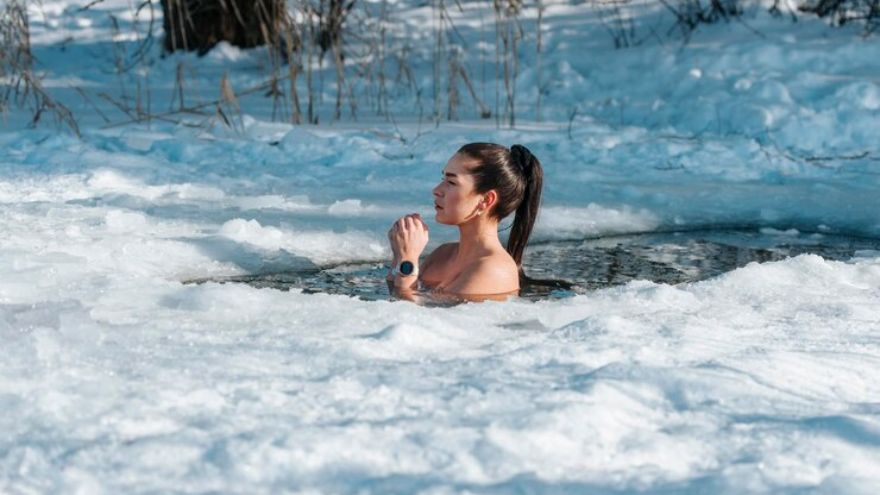
Looking for a simple yet powerful way to boost your health and performance? Ice baths might be just what you need. Despite the initial shock of plunging into icy water, the benefits can be well worth it. In recent years, ice baths have surged in popularity, gaining traction among athletes, wellness enthusiasts, and even those looking for a unique way to relax and rejuvenate. From helping muscles recover faster to lifting your mood, ice baths have a lot to offer. In this blog, we'll explore what happens to your body during an ice bath, the many advantages it brings, and tips for getting started. Let’s know the science and testimonials behind this chilling practice and how it can fit into your wellness routine.
The Science Behind Ice Baths
Ice baths, also known as cold-water immersion, involve submerging the body in ice-cold water for a brief period, typically ranging from 5 to 20 minutes. The water temperature is usually between 50 to 59 degrees Fahrenheit (10 to 15 degrees Celsius). This practice is rooted in the principle of cryotherapy, where cold exposure is used to treat various conditions.
When you immerse your body in cold water, several physiological responses occur:
- Vasoconstriction: Blood vessels constrict, reducing blood flow to the extremities. This helps to decrease inflammation and swelling, often beneficial after intense physical activity.
- Reduced Muscle Soreness: The cold can help to reduce delayed onset muscle soreness (DOMS) by limiting the microtrauma and inflammation caused by strenuous exercise.
- Endorphin Release: Exposure to cold triggers the release of endorphins, the body's natural painkillers and mood enhancers, which can create a sense of euphoria and well-being.
Athletic Performance and Recovery
For athletes, ice baths have become a staple in their recovery regimen. Here’s why:
1. Decreased Muscle Soreness and Inflammation: After intense physical activity, muscles can become inflamed and sore. Ice baths help to constrict blood vessels and flush out waste products, such as lactic acid, from the affected tissues. This can significantly reduce muscle soreness and accelerate recovery.
2. Enhanced Recovery: By reducing inflammation and muscle damage, ice baths allow athletes to recover faster between training sessions or competitions. This quicker recovery time enables more frequent and intense training, ultimately leading to improved performance.
3. Mental Toughness: The mental challenge of enduring an ice bath can also contribute to building mental resilience. Athletes often report that regular ice baths help them develop a stronger mindset, which can be beneficial in high-pressure situations.
Mental Health and Well-Being
Beyond physical recovery, ice baths have a range of benefits for mental health:
1. Stress Reduction: The cold shock of an ice bath triggers the release of norepinephrine, a hormone that helps to improve mood and reduce stress. Regular exposure to cold can help to build resilience to stress and improve overall mental well-being.
2. Improved Mood and Reduced Anxiety: The endorphin rush from cold exposure can lead to improved mood and a reduction in anxiety. Many people who take ice baths regularly report feeling more positive and less anxious.
3. Better Sleep: The reduction in stress and anxiety, coupled with the physical recovery benefits, can lead to improved sleep quality. A good night’s sleep is crucial for overall health and well-being, making ice baths a valuable tool in promoting better rest.
Immune System Boost
Cold exposure has been shown to stimulate the immune system, making it more effective at fighting off infections. This is thought to be due to the increase in the production of white blood cells and other immune system components triggered by cold exposure. Regular ice baths can, therefore, contribute to a stronger and more resilient immune system.
Weight Loss and Metabolism
There is some evidence to suggest that cold exposure can boost metabolism and aid in weight loss:
1. Brown Fat Activation: The human body has two types of fat: white fat, which stores energy, and brown fat, which burns energy to generate heat. Cold exposure activates brown fat, leading to an increase in calorie burning and potentially aiding in weight loss.
2. Increased Metabolism: The body's efforts to maintain its core temperature in cold water can lead to a temporary boost in metabolism. This means that you burn more calories even after you’ve exited the ice bath.
Practical Tips for Ice Bathing
If you’re considering incorporating ice baths into your routine, here are some practical tips to get started:
1. Start Slow: If you’re new to cold exposure, start with shorter durations and gradually increase the time as your body adapts. Begin with 5 minutes and slowly work your way up.
2. Temperature Control: Aim for a water temperature between 50 to 59 degrees Fahrenheit (10 to 15 degrees Celsius). Use a thermometer to ensure you’re in the right range.
3. Preparation: Have warm clothing and a blanket ready for after your ice bath. It’s important to warm up slowly after exposure to avoid shock to the system.
4. Breathing Techniques: Practice controlled breathing to help manage the initial shock of the cold and to stay relaxed. Techniques such as those popularized by Wim Hof can be particularly helpful.
5. Consistency: Like any practice, consistency is key. Regular ice baths will help your body adapt and maximize the benefits.
Real-Life Testimonials
Many individuals from various walks of life have experienced the benefits of ice baths firsthand. Here are a few testimonials:
- Athlete’s Perspective: “After a grueling workout, nothing helps me recover faster than an ice bath. My muscles feel less sore, and I’m ready to hit the gym again the next day. It’s a game-changer for my training routine.”
- Mental Health Advocate’s Perspective: “Ice baths have become a crucial part of my mental health toolkit. They help me manage stress and anxiety better than anything else I’ve tried. The sense of calm and clarity I get after an ice bath is incredible.”
- Everyday User’s Perspective: “I started taking ice baths to see if they would help with my chronic inflammation and joint pain. The difference has been amazing. Not only do I feel less pain, but I also sleep better and feel more energized throughout the day.”
Conclusion
The benefits of ice baths are vast, ranging from physical recovery and performance enhancement to mental health improvements and immune system boosts. Whether you’re an athlete looking to recover faster, someone dealing with stress and anxiety, or simply curious about this icy practice, there’s a lot to gain from taking the plunge.
However, it’s important to approach ice baths with caution. In a world where we’re constantly seeking new ways to improve our health and well-being, the age-old practice of cold-water immersion is proving to be a powerful tool. So, why not experience the myriad benefits of ice baths for yourself? The cold truth is clear: ice baths are more than just a trend—they’re a testament to the resilience and adaptability of the human body.
Frequently Asked Questions About Ice Baths
1. How long should I stay in an ice bath?
Ans. For most people, staying in an ice bath for 5 to 20 minutes is effective. Beginners should start with shorter durations, around 5 minutes, and gradually increase the time as their body adapts to the cold.
2. How often should I take an ice bath?
Ans. The frequency of ice baths depends on your goals and tolerance. Athletes often take ice baths after intense training sessions or competitions, which could be several times a week. For general wellness, 2 to 3 times a week might be sufficient.
3. What is the ideal temperature for an ice bath?
Ans. The ideal temperature range for an ice bath is between 50 to 59 degrees Fahrenheit (10 to 15 degrees Celsius). Using a thermometer can help ensure the water is in the optimal range.
4. Can anyone take an ice bath?
Ans. While many people can benefit from ice baths, they may not be suitable for everyone. Individuals with certain medical conditions, such as cardiovascular issues, hypertension, or cold intolerance, should consult a healthcare professional before trying ice baths.
5. What should I wear during an ice bath?
Ans. It's typically recommended to wear a swimsuit or athletic clothing that can get wet. Some people prefer to wear additional clothing like a long-sleeved shirt to help with the initial shock of the cold.
6. Should I warm up after an ice bath?
Ans. Yes, it's important to warm up slowly after an ice bath. Have warm clothing, a blanket, or a warm beverage ready for after your immersion. Gradual warming helps prevent shock to the system.
7. Can ice baths help with weight loss?
Ans. Ice baths can potentially aid in weight loss by boosting metabolism and activating brown fat, which burns calories to generate heat. However, they should be combined with a balanced diet and regular exercise for effective weight management.
8. Do ice baths help with inflammation and pain?
Ans. Yes, ice baths can reduce inflammation and alleviate pain by causing vasoconstriction and decreasing swelling. This makes them beneficial for recovery after intense physical activity or for managing chronic pain and inflammation.
9. Are there any risks associated with ice baths?
Ans. While generally safe for healthy individuals, ice baths do carry some risks, such as hypothermia, frostbite, and shock to the system, especially if done improperly. It's crucial to start slow, use the right temperature, and consult with a healthcare professional if you have any health concerns.
10. What should I do if I feel too cold or uncomfortable in an ice bath?
Ans. If you feel excessively cold, uncomfortable, or experience numbness, it's best to get out of the ice bath immediately. Warm up gradually with warm clothing and a blanket, and consider reducing the duration or temperature of your next ice bath session. Always listen to your body and avoid pushing yourself too hard.



